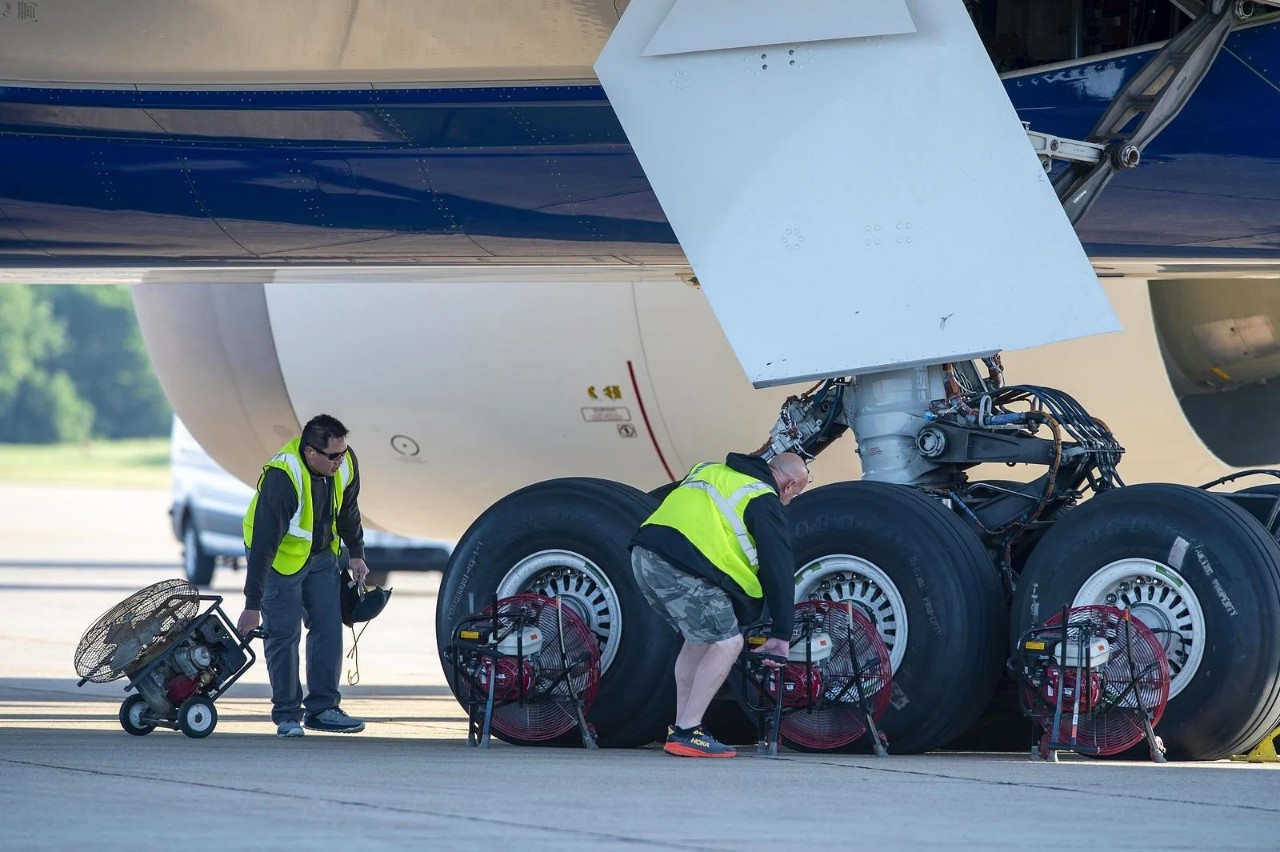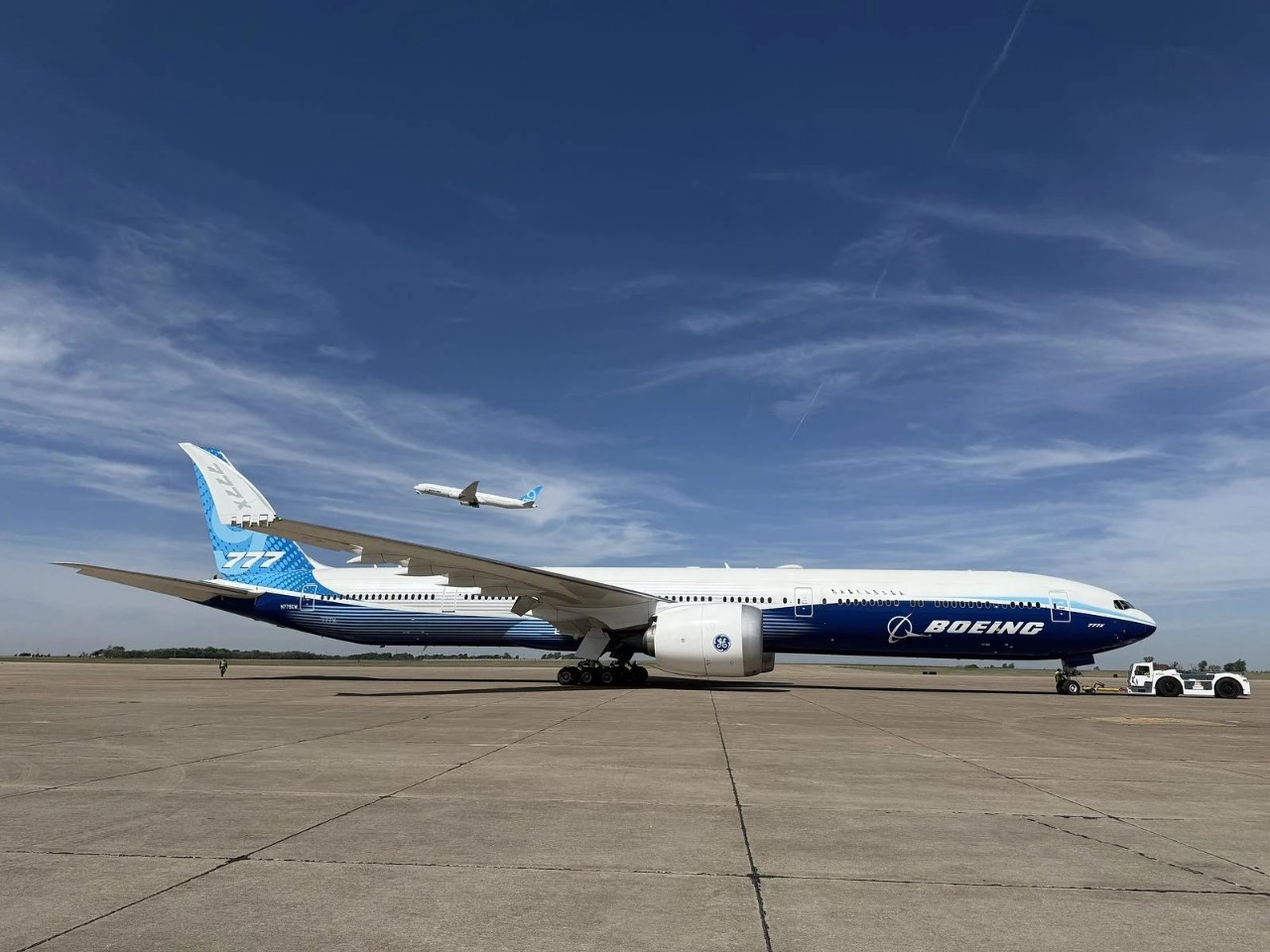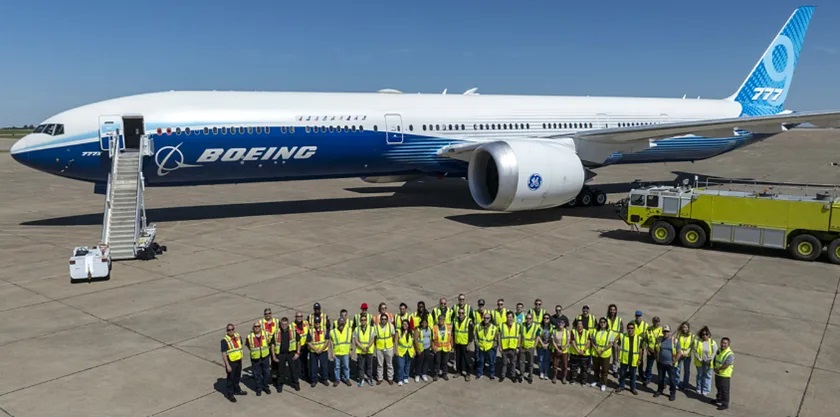Video: 777-9 team weathers storms to test the brakes
Go behind the scenes as the team tackles dry runway brakes testing — 63 days and 117 new wheels later. BNN

The 777-9 team conducted brakes certification tests through May. (Paul Weatherman photo)
From fierce winds to torrential hail and severe thunderstorms, the 777-9 team worked to complete a series of braking certification tests in Oklahoma for Boeing’s new widebody airplane.
It took 63 days – more than double the original forecast – but the team completed the testing and returned home in May.
Catch up quick: In early March, teammates established operations in Clinton Sherman, Oklahoma, while others flew in with WH001, the first 777-9 flight test airplane. Their mission: to test brakes and wheels in dry conditions, subjecting the airplane to hard braking to demonstrate performance for certification credit.
- “We test these extremes so that we know where the boundaries are for the airplane, and we make sure that the airplane meets our expectations and the expectations of the regulator,” said Heather Ross, 777-9 project pilot.

Flight test teammates Brian Pham (left) and Drew Kemp position fans to cool the 777-9's wheels and brakes after testing to allow consecutive test conditions to be completed. (Paul Weatherman photo)
Difficult conditions
The testing required specific weather conditions, including calm winds (below 10 knots, or less than 12 miles per hour) and dry runways, which proved elusive during much of the scheduled trip.
- “Our analysis team had given us really tight wind limitations so the data we collect focuses on the brakes’ performance, not other influencing factors,” explained Madison Strauss, test director. “If the winds exceed those on a particular day, we can't do that test.”
- “Sometimes that can look like just a lot of unpredictability and having to readjust the plan constantly,” Strauss added. For example, when high winds in Oklahoma meant brake testing couldn’t happen, the team flew to Lubbock, Texas, for the day to pick up crosswind testing.
Twice, the weather was so severe that the team had to fly elsewhere to avoid potential hail damage.

The team faced inclement weather, including hail, thunderstorms and high winds, during the extended remote. (Matt England photo)
Setting up for success
A successful remote, shorthand for an extended trip away from the test team’s home base at Seattle’s Boeing Field, requires advance planning and the support of a multi-disciplinary team, on location and in Puget Sound.
- “The most challenging part of being on a remote is trying to get the right equipment, the right tools, the right parts,” said Marlon Mercado, flight test maintenance. “We usually operate 24 hours a day, two shifts of 12 hours.”
- “We're constantly trying to make sure that we have everything we need to continue testing,” added Jeff Un, instrumentation engineer. “Even though there are many people here, there's probably just as many or more (in Seattle) that are collaborating to support the test.”

Two flight test 777-9s overlapped testing in Oklahoma. (Erik Haverkate photo)
Rewarding work
Despite the challenges and time away from home, the team was motivated by the importance of their efforts.
- “Everybody has a singular focus,” said Kyle Ator, flight test engineer. “You feel as much of a team as you’ll ever feel when you’re in a flight test program. It’s very rewarding to be here and be able to move the program further along.”
- “I love being on a remote, but one thing I like the most is being able to overcome challenges and problems that arise,” added Mercado.
- “I love flying. I love working with the team, and I really thrive in a dynamic, challenging environment, so that’s why I like this job,” agreed Strauss.

Some of the teammates who supported the remote testing mark the successful completion of dry runway brakes testing in May. (Paul Weatherman photo)
What’s next
The program will continue testing the 777-9, including simulating ice formations on the airplane’s wings and other surfaces, as well as evaluating braking performance on wet runways.
The bottom line
“This team never gave up,” said Terry Beezhold, 777-9 vice president and general manager. “One day, they waited at the end of the runway for four hours for the winds to calm enough to complete just one test condition. They demonstrated impressive resolve and tenacity as they fought for every test point. I am so proud of this team and what they accomplished.”